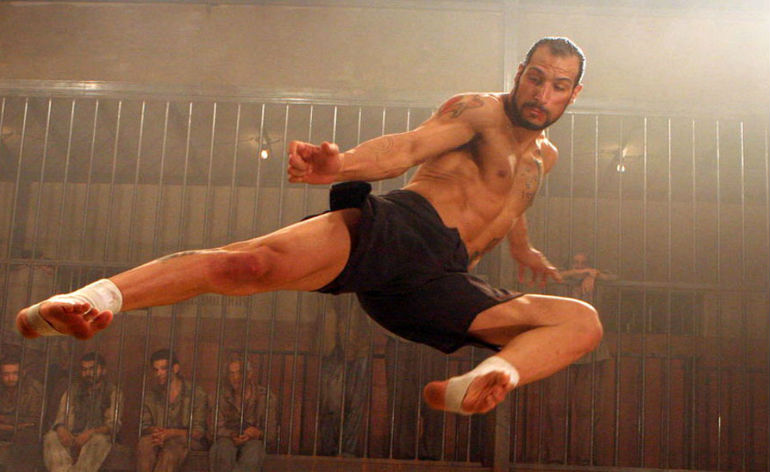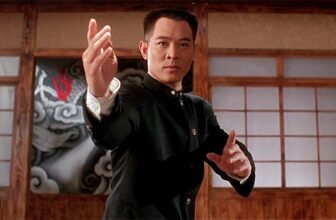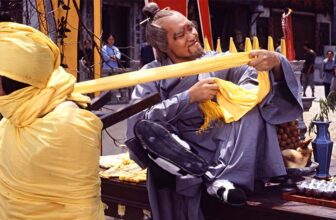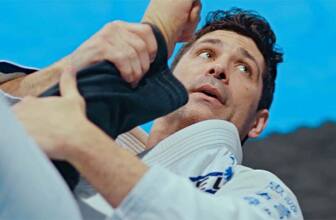
Author: Glen Stanway
Publisher: GMax
Subject: History/Autobiographical
Year: 2013
Synopsis
‘Fearless, the story of Chin Woo Kung Fu’ is a book that charts the history of the style, how it has travelled around the globe and the connections with modern culture. It also includes a mini autobiography of the author’s journey in the martial arts, focusing on his almost 20 year relationship with Chin Woo.
Review
The book cover tells you the majority, but not all, of what you should expect in the book. The title promises the story of Chin Woo Kung Fu with images of the Chin Woo shield and the legend that is Huo Yuanjia. The extras in the book not readily clear from the cover are a potted history of Chinese martial arts, a section on the Chin Woo links in popular culture and an interesting mini autobiography.
It begins with a short chapter on the history of Chinese martial arts, including a very early history as well as Shaolin Legacy and then moves into more modern times by covering the early 20th century. Next, is the post war period of the mid to latter half of the century where The People’s Republic of China influenced the martial arts of the country.
The next chapter focuses on basics within Chinese martial arts, including styles, training, stances, Qigong and meditation, forms and a little on application and weapons training.
We then move to a nice piece on Huo Yuanjia, the founding Master and figurehead of the first Chin Woo School. This section naturally leads on to the following chapters of how the school was established and later exported overseas. This is where the book starts to move from the history of Chin Woo, into the over –arching story of Chin Woo, and how it has travelled to many other countries over the last century.
A short chapter on Bruce Lee and his connection with Chin Woo follows, before moving onto an intriguing couple of chapters which cover the Three Great Heroes of Chin Woo and well known Grandmaster Teng Wie Yoo.
Chin Woo concepts are next followed by the famous ten Chin Woo forms as well as weapons used. We then get a picture of Chin Woo in popular culture, from the movie “Fist of Fury“, through to “Star Wars: The Phantom Menace”, “The Matrix” and “Fearless“.
As we near the end of the book, we get to my favorite part, which is the author’s personal journey in Chin Woo. We hear how he started in martial arts, and his reasons for beginning his kung fu training. There are some great pictures as Stanway explains some of his experiences and his many visits to Malaysia to train.
Lastly we have a short chapter about the legacy of Chin Woo and we close with a message from Master Teng.
Summary
This book covers the story of Chin Woo, from its inception to it migrating to all corners of the world. Stanway personalises the story with his own journey and lineage from Grandmaster Teng Wie Yoo. It is part history, part autobiographical and gives a good understanding of how Chin Woo has grown. Glen has published another book on ‘The Art of Coaching’ and I hope his next book is an expansion on his own story with Chin Woo, including the story of Grandmaster Teng Wie Yoo, as I think many people would find it a very stimulating read.
It is worth noting that the Kindle version of this book is text only, while the paperback is full of pictures.
This is a great book to read as it gives a good insight into Chin Woo Kung Fu and a very interesting personalized account.
Favorite Quotes
- ‘Despite aspects of the story that may be disputable, what cannot be understated was the degree of pride and patriotism that Huo Yuanjia inspired in the Chinese people which grew with the establishing and spread of Chin Woo throughout Southeast Asia.’
- ’Training was very hard, with students sometimes expected to hold deep stances for an hour or more. Master Teng had to practice the Twelve Rows Tan Tui routines by performing them continuously for six laps of the famous Olympic- size swimming pool at the Chin Woo stadium in Kuala Lumpur, without a break.’
- ‘The three Yap brothers devoted themselves to Chin Woo for their entire livers and accomplished a great deal in a relatively short time. It was their dedication, hard work and methodical preservation of the Spirit of Chin Woo, that made Malaysia the worldwide and respected centre for Chin Woo wushu that it is today.’
- While practicing the Lion Dance: ‘Happy that we could all lift our partners up, Master Siow took us over to the metal platforms. I asked him “What happens if we fall off?” Master Siow replied “That’s okay. Everyone will stand around the poles and catch you. Try not to bang your head”.’






